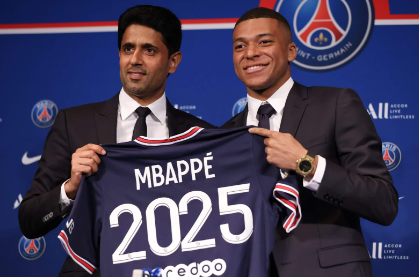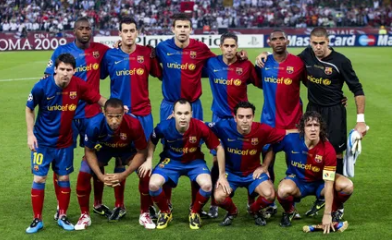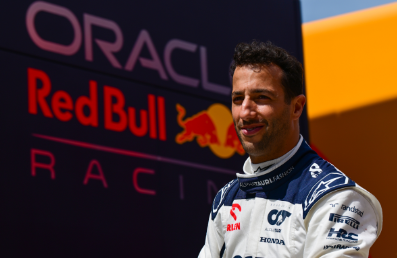Filed under:
As the years go on sports naturally become more competitive, athletes get stronger, strategies developed, and players responsibilities expand. The longer a sport is played the more difficult records become to break, one record that seems to have a new home every week in football is the record for the youngest player. While it’s always been relatively normal to have 18 and 19 year old youngsters take the pitch lately clubs have been pushing the limit on how young is too young. While a player's talent will always matter more than age there are some valid concerns around relying on kids in a professional team. So have teams hit a fountain of youth gold mine or do they risk ruining a generation for today's audiences.
The biggest example of clubs beginning to rely on young players came earlier this year when La Liga side Barcelona announced barely 16-year-old Lamine Yammal would move up to the first squad and start matches. Even Chelsea hopped on the youngster bandwagon allowing their U15 captain to train with the first team. While many clubs have been more consistent in benching their favorite headline earners Barcelona has been chronic in finding new academy-made players to throw on the pitch. In their match against Osasuna the club started Marc Guiu and the 17 year old scored on debut after only 23 seconds. The Catalan club has shown the world that young players make more than just headlines. Away from La Liga in the Premier League there have been a few cases albeit not quite as extreme one of two of these coming from Manchester City in the likes of Rico Lewis and Phil Foden. One thing is made clear by all of these names; across the footballing world youth is becoming less and less of an anomaly.
Many of these new young starters have impressed both fans and pundits alike with their skills and decorum despite their youth. Players like Lamine Yamal seem able to not just run the pitch but strategically read it as well. Phil Foden and Rico Lewis both fill crucial roles in the Man City roster when they are needed. However, is this advantage coming at a cost? Younger players tend to be less predictable; they make basic mistakes on the pitch where someone with more experience wouldn’t. Playing at high levels very young can also cause injury prone and burnt out players especially when they’re made a major part of the starting roster. While being injury prone doesn’t come from just one thing there’s been many examples of players playing a large number of high level games at a young age who now face issues with consistency and injury.
The way humans develop means we aren’t even fully formed until around age 25 so it’s no wonder many players see their prime around this age. What it also means is that these kids, and it’s important not to forget that these are in many cases literal children, face the pressures and work that takes a massive toll on fully grown and developed adults. The truth is we don’t know how this kind of pressure will affect these kids in the long run and based on similar fields like child acting it’s clear it could go in a very negative direction. The game we all love isn’t worth killing the player over.
Youth competing at higher level academies are already known to have high rates of anxiety and if those youth players are released or fail to make it, their rates of unemployment and risk of depression skyrockets. These are players who never actually stepped foot in a first team match, imagine the damage that could be done if a player who was a star at 16 begins to fail to perform or becomes injury prone. Many like to look at an athlete's career as a linear growth of skill and athleticism until around 28 or 30 but that's simply untrue. There are many cases of a player blowing us away one season and failing to deliver the next, these kids are the exact same if not worse due to an increased strain on the body.
With all this in mind it’s clear there are some serious risks and drawbacks to these youngsters but as earlier discussed many have and continue to provide incredible skills and work for their teams. Does it really matter how old someone is if they have the skills and talent to perform. Looking at what team uses younger players more often a strategy on where they work best begins to form. LaLiga club Barcelona are best known for bringing their youth players onto the pitch when they have a hole that needs to be filled. Barcelona has one of if not the best youth academy in the world and certainly the best in Spain, their academy produces incredible players to be used and sold by the Club. Clubs who use players from their academies have had the best records with youth players. This makes sense given that clubs with a heavy focus on their academies train kids with a certain style of play that works well with the first team, this makes any strategic adjustments in the move minor. Well monitored and well funded academies also develop the players as people giving them valuable skills and lessons on as well as off the pitch. By developing these young players they put them in a position to succeed and actually help the team.
Every major league as well as FIFA have rules around players under 18 which limits things like playing time, contracts, and transfers. While these rules exist many aren’t realistic and are made for a different time one before we saw more players start to join. These governing bodies should take notice and place harsher restrictions on clubs. Limiting youth first team minutes, maintaining schooling requirements, and offering stronger youth-centered counseling and support would all be great start to ensure this trend stays as helpful and doesn’t hurt the future of the sport.
Trends come and go within all sports. Whether it’s tactical or individual player profiles, the world of football is constantly changing and to ensure the maximum benefit for these changes clubs have to adapt around them. Younger players do present themselves as a solid asset and age shouldn’t matter more than talent however younger players have different needs. If we’re to continue seeing 16 and 17 year old starters, clubs and governing bodies should be taking steps to maximize the benefit and minimize any harm to these unique individuals. Youth is the future and we should do everything in our power to ensure that future stays bright.




